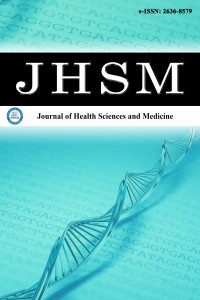1.
Foxman B. The epidemiology of urinary tract infection. Nat Rev Urol. 2010;7(12):653-660. doi:10.1038/nrurol.2010.190
2.
Özgüneş İ. Hastane kökenli üriner sistem enfeksiyonları. Turk Klin Infect Dis Spec Topics. 2010;3(1):5-10.
3.
Leblebicioğlu H. Nozokomiyal üriner sistem enfeksiyonları. Turk Klin J Intern Med Sci. 2007;3(11):26-33. doi:10.5505/kjms.2019.26937
4.
Barnett BJ, Stephens DS. Urinary tract infection: an overview.Am J Med Sci. 1997;314(4):245-249. doi:10.1097/00000441-199710000-00007
5.
Najar MS, Saldanha CL, Banday KA. Approach to urinary tract infections. Indian J Nephrol. 2009;19(4):129-139. doi:10.4103/0971-4065. 59333
6.
Bonadio M, Meini M, Spitaleri P, Gigli C. Current microbiological and clinical aspects of urinary tract infections. Eur Urol. 2001;40(4):439-445. doi:10.1159/000049813
7.
Linhares I, Raposo T, Rodrigues A, Almeida A. Frequency and antimicrobial resistance patterns of bacteria implicated in community urinary tract infections: a ten-year surveillance study (2000-2009). BMC Infect Dis. 2013;13:19. doi:10.1186/1471-2334-13-19
8.
Önal HG. Trends in pediatric kidney stone research between 2004-2023: a bibliometric study. J Med Palliat Care. 2024;5(5):265-276. doi:10.47582/jompac.1538518
9.
Mostafaei H, Salehi-Pourmehr H, Rahnama’i MS, Mostafaei H, Shariat SF, Hajebrahimi S. Microbiome in lower urinary tract symptoms (LUTSs): mapping the state of the art with bibliometric analysis. Life (Basel). 2023;13(2):552. doi:10.3390/life13020552
10.
Kumar B, Dhua AK, Goel P, Yadav DK, Jain V, Jain D. Pediatric UTI research: trends, collaborations, and hotspot topics-a bibliometric analysis. Life Res. 2024;7(4):17. doi:10.53388/LR20240017
11.
Shaikh N, Morone NE, Bost JE, Farrell MH. Prevalence of urinary tract infection in childhood: a meta-analysis. Pediatr Infect Dis J. 2008;27(4): 302-308. doi:10.1097/INF.0b013e31815e4122
12.
Morris BJ, Wiswell TE. Circumcision and lifetime risk of urinary tract infection: a systematic review and meta-analysis. J Urol. 2013;189(6): 2118-2124. doi:10.1016/j.juro.2012.11.114
13.
Beerepoot MA, Geerlings SE, van Haarst EP, van Charante NM, ter Riet G. Nonantibiotic prophylaxis for recurrent urinary tract infections: a systematic review and meta-analysis of randomized controlled trials. J Urol. 2013;190(6):1981-1989. doi:10.1016/j.juro.2013.04.142
14.
Wagenlehner F, Naber KG. The role of antimicrobial resistance in urinary tract infections. Infect Control Hosp Epidemiol. 2023;44(5):345-356.

